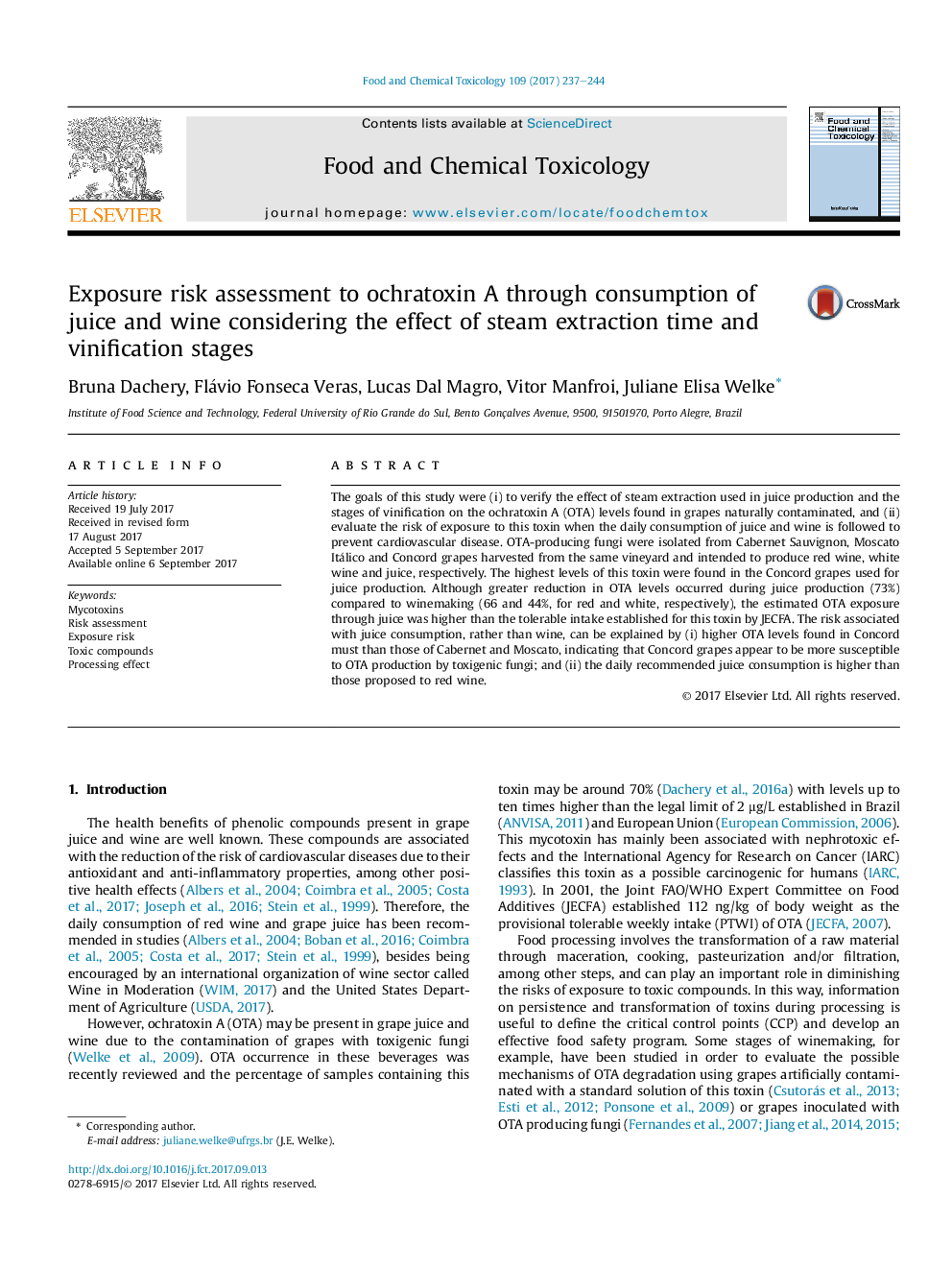| Article ID | Journal | Published Year | Pages | File Type |
|---|---|---|---|---|
| 5559967 | Food and Chemical Toxicology | 2017 | 8 Pages |
Abstract
The goals of this study were (i) to verify the effect of steam extraction used in juice production and the stages of vinification on the ochratoxin A (OTA) levels found in grapes naturally contaminated, and (ii) evaluate the risk of exposure to this toxin when the daily consumption of juice and wine is followed to prevent cardiovascular disease. OTA-producing fungi were isolated from Cabernet Sauvignon, Moscato Itálico and Concord grapes harvested from the same vineyard and intended to produce red wine, white wine and juice, respectively. The highest levels of this toxin were found in the Concord grapes used for juice production. Although greater reduction in OTA levels occurred during juice production (73%) compared to winemaking (66 and 44%, for red and white, respectively), the estimated OTA exposure through juice was higher than the tolerable intake established for this toxin by JECFA. The risk associated with juice consumption, rather than wine, can be explained by (i) higher OTA levels found in Concord must than those of Cabernet and Moscato, indicating that Concord grapes appear to be more susceptible to OTA production by toxigenic fungi; and (ii) the daily recommended juice consumption is higher than those proposed to red wine.
Related Topics
Life Sciences
Agricultural and Biological Sciences
Food Science
Authors
Bruna Dachery, Flávio Fonseca Veras, Lucas Dal Magro, Vitor Manfroi, Juliane Elisa Welke,
